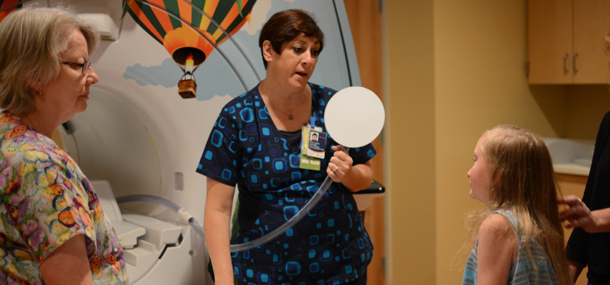
Over the past five years, a new model called quantitative imaging has begun to emerge within radiology. This type of imaging allows radiologists to take a measurement that can then be used to track a disease and its subsequent treatment.
MR elastography is a type of quantitative imaging. In this technique, a paddle is placed on your child’s abdomen and sends sound vibrations to the liver. The MRI machine then takes pictures of these sound waves and a computer measures how big or small the waves are. The firmer the liver is, the larger the sound waves are. In addition to measuring the stiffness of the liver, we also take pictures that allow us to quantify the percentage of the liver that is replaced by fat.
While MR elastography can be performed for a number of reasons, the most common reason at Cincinnati Children’s is in cases of obesity. If a child is obese, the liver can become replaced by fat. In a small percentage of these patients, inflammation can occur, causing fibrosis and possibly cirrhosis. MR elastography can help to distinguish these different states as fibrotic and cirrhotic livers are firmer than a normal liver. Because this technique is accurate, it can help certain patients avoid a liver biopsy. In addition, because this test is very reproducible and does not use radiation, it can be used to monitor patients to see if medications or a change in diet is having an effect on the liver.
If your child is having this test, he or she should expect to feel the gentle sound vibrations while the test is being performed. While the sound waves are painless, we always try to warn your child before they start so that he or she won’t be startled and move while we are taking pictures. This exam usually takes about 30 minutes from start to finish, but may be faster or slower depending on your child.
Story contributed by Alex Towbin, MD, and edited by Tony Dandino